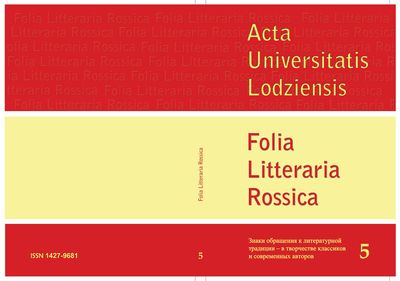Баллада м. Ю лермонтова три пальмы и судьба одного ориентельного мотива в поэзии в. Жуковского, а. Пушкина, а. Мицкевича
East–west synthesis in Lermontov’s works and the history of an oriental motif in the poetry of 1810-1830
Author(s): Ljudmila HodanenSubject(s): Poetry, Russian Literature, 19th Century
Published by: Wydawnictwo Uniwersytetu Łódzkiego
Keywords: metaplot “the horse and the rider in the desert”; East-West; French poetry; Zukovskij; Pushkin; Mitskevich; Lermontov;
Summary/Abstract: The article is about the eastern motif “the horse and the rider in the desert”. This motif appeared in the French poetry (Millevoye, Lagrange) in connection the translations of the Bedouin (desert arabs) poetry. Gradually In poetry by V. Zukovskij’s (Песнь араба над могилою коня), A. Pushkin (IX Imitation from the poetic cycle Подражания Корану), A. Mitskevich (Фарис), M. Lermontov (Три пальмы) the metasubject was formed in which a synthesis of Eastern and Western motives was created. The poets start with the imitation of the eastern texts and then in their poetry they start to express the philosophical ideas of correlation between the Eastern and the Christian cultures as different forms of a civilization development
Journal: Acta Universitatis Lodziensis. Folia Litteraria Rossica
- Issue Year: 2011
- Issue No: 4
- Page Range: 53-61
- Page Count: 10
- Language: Russian

